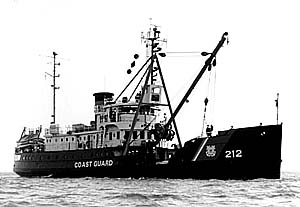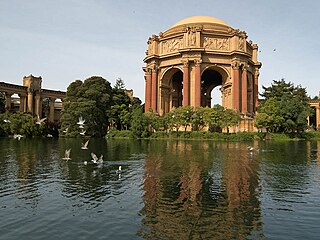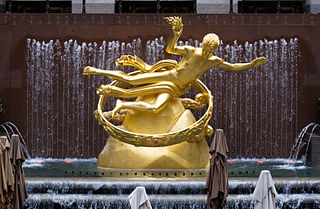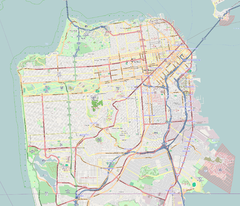
South San Francisco is a city in San Mateo County, California, United States, located on the San Francisco Peninsula in the San Francisco Bay Area. The city is colloquially known as "South City". The population was 66,105 at the 2020 census.

The San Francisco Public Library is the public library system of the city and county of San Francisco. The Main Library is located at Civic Center, at 100 Larkin Street. The library system has won several awards, such as Library Journal's Library of the Year award in 2018. The library is well-funded due to the city's dedicated Library Preservation Fund that was established by a 1994 ballot measure. The Preservation Fund was renewed twice, by ballot measures in 2007 and 2022.

Rincon Hill is a neighborhood in San Francisco, California. It is one of San Francisco's many hills, and one of its original "Seven Hills". The relatively compact neighborhood is bounded by Folsom Street to the north, the Embarcadero to the east, Bryant Street on the south, and Essex Street to the west. Named after Rincon Point that formerly extended into the bay there, Rincon Hill is located just south of the Transbay development area, part of the greater South of Market area. The hill is about 100 feet tall.

Moore Dry Dock Company was a ship repair and shipbuilding company in Oakland, California. In 1905, Robert S. Moore, his brother Joseph A. Moore, and John Thomas Scott purchased the National Iron Works located in the Hunter's Point section of San Francisco, and founded a new company, the Moore & Scott Iron Works Moore had previously been vice president of the Risdon Iron Works of San Francisco. Scott was nephew to Henry T. and Irving M. Scott, owners of the nearby Union Iron Works, where John had risen from apprentice to superintendent. Their new business was soon destroyed by fire resulting from the San Francisco earthquake.

Timothy Ludwig Pflueger was an architect, interior designer and architectural lighting designer in the San Francisco Bay Area in the first half of the 20th century. Together with James R. Miller, Pflueger designed some of the leading skyscrapers and movie theaters in San Francisco in the 1920s, and his works featured art by challenging new artists such as Ralph Stackpole and Diego Rivera. Rather than breaking new ground with his designs, Pflueger captured the spirit of the times and refined it, adding a distinct personal flair. His work influenced later architects such as Pietro Belluschi.
Edwards Stadium is the track and field and soccer venue for the California Golden Bears, the athletic teams of the University of California, Berkeley. It has been a Berkeley Landmark since November 2, 1992, under the name Edwards Stadium and Field.
Henry Doelger was an American real estate developer and builder known for the creation of large low-cost housing tracts in San Francisco and Daly City. He worked alongside his brothers to form the company Doelger Homes.

Downtown Hayward is the original and current central business district of Hayward, California, United States, and is home to the current Hayward City Hall, along with the two previous city halls, Alex Giualini Plaza and the City Center Building. The Hayward Fault runs through the area, and is the cause of the two previous city halls being taken out of use.

Westlake Shopping Center is one of the first shopping malls built in America; ground was broken in 1948 for the mall in Daly City, California, United States. It is anchored by Burlington Coat Factory, Home Depot, Ross, Safeway, Target, and Walgreens.
San Bruno Park Elementary School District was created in 1906 in San Bruno, California to meet the needs of a growing population following the San Francisco earthquake and fire.

The Marina District is a neighborhood located in San Francisco, California. The neighborhood sits on the site of the 1915 Panama–Pacific International Exposition, staged after the 1906 San Francisco earthquake to celebrate the reemergence of the city. Aside from the Palace of Fine Arts, all other buildings were demolished to make the current neighborhood.

The SF Masonic Auditorium is a building and auditorium located atop Nob Hill in San Francisco, California. The building was designed by Bay Area architect Albert Roller (1891-1981), and opened in 1958. It serves as the meeting venue for the Masons of California during their Annual Communication, as well as being used as a concert venue the rest of the year. The administrative offices of the Grand Lodge of California are contained in the upper floors, and the Henry Wilson Coil Library and Museum of Freemasonry is located on the mezzanine. The basement contains a five-level public parking garage.

The Westlake District of Daly City, California, was originally created as one of the first post-World War II white-only suburbs in the United States, though for several decades now is as ethnically diverse as the City of Daly City itself. Located just south of San Francisco, Westlake in its early years had frequently been compared to Levittown, New York, the first major large-scale postwar middle-class white-only housing development in the U.S.

The Malloch Building is a private residential apartment building on Telegraph Hill in San Francisco designed in the Streamline Moderne style and built in 1937. The building, one of the best examples of its type in San Francisco, is also known as Malloch Apartments, Malloch Apartment Building, and simply by its address: 1360 Montgomery Street. Some have called it the "Ocean-Liner House", though other Moderne buildings have also been known by that nickname.

Lane Medical Library is the library of the Stanford University School of Medicine at Stanford University, near Palo Alto, California. Its mission is to "accelerate scientific discovery, clinical care, medical education and humanities through teaching, collaboration, and delivery of biomedical and historical resources". It is located on campus adjacent to Stanford Hospital and Clinics. In addition to books, journals and documents for medical research and the teaching and practice of medicine, Lane Library houses a significant collection of material relating to the history of medicine. The library also provides specialized search capabilities, classes and tutorials, writing and grant support, and group and individual study spaces.

Alcatraz Wharf is located on the southeast side of Alcatraz Island, in San Francisco Bay, California, US. Classified as building number 33 of the Alcatraz Island National Historic Landmark, its historic name variants were "Alcatraz Dock" and "Alcatraz Pier". It is the main access point to Alcatraz. Another dock on the island's northwest side was only used for rock loading. The wharf contained many of the islands historic buildings, including Building 64, the Bombproof Barracks, Chinatown, Ranger Office, Garage, Dock Tower, Storage Vault, and Firebox #3.

The I. Magnin Building is a former I. Magnin department store in Oakland, California located at 2001 Broadway. It was built in 1931 and designed by architecture firm Weeks and Day. It housed the upscale department store until it closed in 1995. The building's green terra-cotta facade and art deco ornamentation make it a prominent landmark and a local visitor attraction in the Uptown neighborhood.
Alioto's Restaurant was a historic Italian fish restaurant located at San Francisco's Fisherman's Wharf.

The Art Deco style, which originated in France just before World War I, had an important impact on architecture and design in the United States in the 1920s and 1930s. The most notable examples are the skyscrapers of New York City, including the Empire State Building, Chrysler Building, and Rockefeller Center. It combined modern aesthetics, fine craftsmanship, and expensive materials, and became the symbol of luxury and modernity. While rarely used in residences, it was frequently used for office buildings, government buildings, train stations, movie theaters, diners and department stores. It also was frequently used in furniture, and in the design of automobiles, ocean liners, and everyday objects such as toasters and radio sets.

The White House was the first department store in San Francisco; it opened in 1854 and closed in 1965. It was originally named Davidson & Lane, then J.W. Davidson & Company, and finally, in 1870, when it moved to a large new building, took the name "The White House".



















